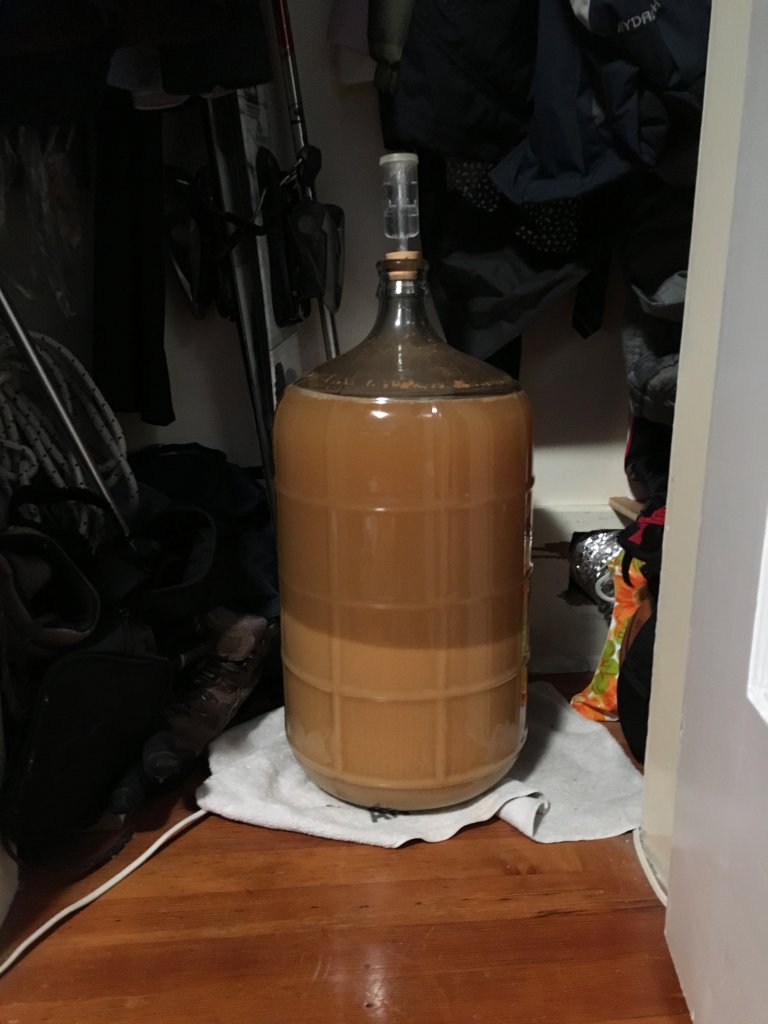Brew It Back
Member
- Joined
- Sep 16, 2018
- Messages
- 8
- Reaction score
- 0
This is my first time making cider, so excuse my ignorance. As a beer brewer, I am kind of alarmed by the amount of sediment in my cider. Mind you, this is after I racked from primary to secondary about a week ago. Also, the airlock is still very active (bubbles every few seconds), more than 2.5 weeks later now. The S.G. is currently 1.01, cider tastes quite dry, tart with a little bit of bitterness.
A bit of background:
This is a pear 60%/apple 40% cider, most of the pears were sweet and very ripe, some of the apples were tart, but mostly sweet. I did not check the ph level. O.G. 1.05
I let the food processed fruit sit with pectic enzyme and campden tablets sit for 24 hours, then pitched the yeast (Nottingham ale). The yeast seemed to be quite active, I pressed the fruit and transferred to secondary, though most of the juice had naturally separated in the primary. This is the part that makes me worried- when I first transferred the juice to the secondary it was much less opaque. At first I was quite pleased that fermentation seemed to be vigorous, but now I am worried that I may have cider sickness- since it's been 2 weeks and fermentation is still going strong. Also, seems like I lost almost half my cider to sediment..What should I do?



















































![Craft A Brew - Safale BE-256 Yeast - Fermentis - Belgian Ale Dry Yeast - For Belgian & Strong Ales - Ingredients for Home Brewing - Beer Making Supplies - [3 Pack]](https://m.media-amazon.com/images/I/51bcKEwQmWL._SL500_.jpg)






